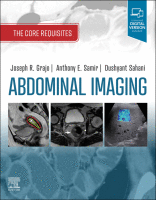Physical Address
304 North Cardinal St.
Dorchester Center, MA 02124

Anatomy, embryology, pathophysiology ◼ Jaundice refers to the clinical sign of hyperbilirubinemia (>2.5 mg/dL), often manifesting with yellowing of the cutaneous surfaces, sclerae conjunctiva, and oral mucosa. ◼ Largely subdivided into nonobstructive (prehepatic and hepatic etiologies) and obstructive (posthepatic etiologies).…

Anatomy, embryology, pathophysiology ◼ The gallbladder (GB) is a pear shaped musculomembranous structure, lying along the hepatic undersurface, functioning as a reservoir to accumulate bile (~30–50 mL). ◼ Embryologically, the GB develops from a diverticulum outpouching in the caudal portion…

Anatomy, embryology, pathophysiology ◼ Lesions in the liver are often characterized based upon underlying histology. The most common benign lesions include simple cysts, hemangiomas, hepatocellular adenoma (HCA), focal nodular hyperplasia (FNH), regenerative nodules, and hepatic abscess. ◼ Most benign hepatic…

Anatomy, embryology, pathophysiology Anatomy and embryology of the liver is presented in Chapter 15 . This chapter will continue with pathophysiology of cirrhosis. ◼ Cirrhosis is the final stage of chronic liver disease, which is characterized by diffuse parenchymal necrosis,…

Anatomy, embryology, pathophysiology ◼ The liver is located in the right upper quadrant of the abdomen below the diaphragm. It is mostly covered by ribs but the lower portion of the liver is palpable below the right costal margin. The…

Anatomy, embryology, pathophysiology ( fig. 14.1 ) ◼ Serous cystadenoma: inactivation of von Hippel-Lindau ( VHL ) gene. ◼ Mucinous cystic neoplasms (MCNs): closeness of left primordial gonad to the dorsal pancreatic bud during development, with possible incorporation of ovarian…

Anatomy, embryology, pathophysiology ◼ Adenocarcinoma: inactivation of multiple antioncogenes, as well as issues with deoxyribonucleic acid mismatch repair ( BRCA2 ). Smoking, diet high in meat and solvent exposure are risk factors. ◼ Neuroendocrine tumors: multiple chromosomal losses. Associated with…

Anatomy, embryology, pathophysiology ◼ The pancreas is a lobulated, unencapsulated gland located in the anterior pararenal space of the retroperitoneum. ◼ Pancreatic development: two outpouchings or buds develop from the endodermal lining of the duodenum. The ventral bud will eventually…

Anatomy, embryology, pathophysiology ◼ There are three major anatomic regions that may contribute to right lower quadrant pain. Organ systems with differential diagnoses include: ◼ Gastrointestinal system: cecum, ascending colon, appendix. ◼ Acute appendicitis. ◼ Acute cecal diverticulitis. ◼ Inflammatory…

Anatomy, embryology, pathophysiology ◼ There are three major anatomic regions that may contribute to right upper quadrant pain. Organ systems with differential diagnoses include: ◼ Gastrointestinal system: liver, biliary, pancreas, and duodenum. ◼ Liver. ◼ Hepatic steatosis. ◼ Infectious hepatitis.…